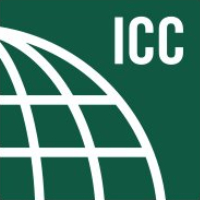
ICC Works with Feds to Fix Energy Tax Credit Extension
![]() The change will benefit homeowners, impact the construction industry
The change will benefit homeowners, impact the construction industry
New federal regulations related to energy tax credits and references to the International Energy Conservation Code (IECC) will affect International Code Council members, home builders, other segments of the construction industry and homeowners, according to an International Code Council analysis. The Tax Relief, Unemployment Insurance Reauthorization, and Job Creation Act of 2010 includes key provisions that perhaps most importantly fix a drafting error in the American Recovery and Reinvestment Act of 2009 (ARRA) tax code section that described the types of windows, skylights and doors of eligible for tax credit.
The Code Council’s Government Relations staff regularly works with federal agencies and committees, including staff for the Joint Committee on Taxation, which has responsibility for the technical provisions of tax legislation, on behalf of ICC Members. The Council had several meetings with the Joint Committee’s staff and pointed out an error in the ARRA regarding fenestration products, and provided a reference copy of the 2009 IECC to the Committee staff. The 2009 IECC can be downloaded for free thanks to funding provided by the U.S. Department of Energy.
The windows, skylights and doors eligible for tax credit were listed in the ARRA as products having a U-factor less than or equal to 0.30 and a solar heat gain coefficient (SHGC) of less than or equal to 0.30.
The requirement for an ultra-low window SHGC, most relevant to homes in southern states with cooling-dominated climates (IECC Zones 1, 2 and 3), is not useful in northern, heating-dominated climates (IECC Zones 6, 7 and 8). Moreover, window U-factors any lower than U-0.65 are not indicative of current construction practice in southern climate zones, and the IECC prescribes higher U-factors in those zones.
In another significant change, the reference to the 2000 IECC, which was contained in the definition of “qualified energy efficiency improvements,” drawn from the Energy Policy Act of 2005 was updated to reference the 2009 IECC. This means the basic definition of products considered qualified for an energy-efficient tax credit, whether they are windows or insulation materials and systems, must meet the prescriptive criteria for that material or product, as provided in the 2009 IECC. This change makes the tax provisions of the Recovery Act, and the new tax laws for the 2011 tax year, consistent with the target energy codes set elsewhere in Section 410 of the Recovery Act.
The governors of all 50 states have agreed to seek to achieve 90 percent compliance with the 2009 IECC for new residential buildings by 2017.
While these changes are positive, one of the other changes made in the tax relief bill was to reduce the overall amount of the energy efficiency tax credits. The overall credits were reduced from 30 percent of the cost of improvements, up to $1,500, down to 10 percent of the cost of improvements, up to a total of $500, with lower total limits on individual efficiency upgrades, such as windows, insulation or higher efficiency heating and air-conditioning equipment.
In addition to these energy efficiency tax credits, the legislation also revived a tax credit to home builders, which had expired at the end of 2009. The New Energy Efficient Home Credit (EPAct2005, Sec. 45L) of $2,000 per home, for homes that are 50 percent more energy efficient than a home built to comply with the 2004 Supplement to the IECC. This tax credit, which had expired at the end of April, is again available to builders who construct new, or substantially renovated and reconstructed homes in 2011. The credit is also available for manufactured homes, as long as the contractor meets the other requirements for the tax credit. Under the existing, and the newly extended, tax credit requirements, at least 20 percent of the 50 percent improvement in energy use is required to come from improvements to the home building envelope. Compliance with the 2009 IECC building envelope requirements would likely meet this threshold.
The International Code Council, a membership association dedicated to building safety, fire prevention and energy efficiency, develops the codes used to construct residential and commercial buildings, including homes and schools. Most U.S. cities, counties and states choose the International Codes, building safety codes developed by the International Code Council. The International Codes also serve as the basis for construction of federal properties around the world, and as a reference for many nations outside the United States.







